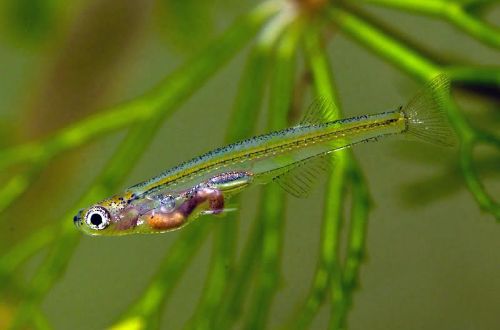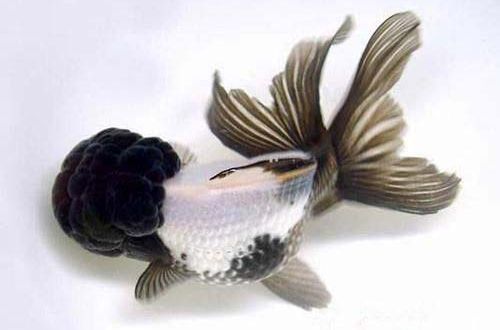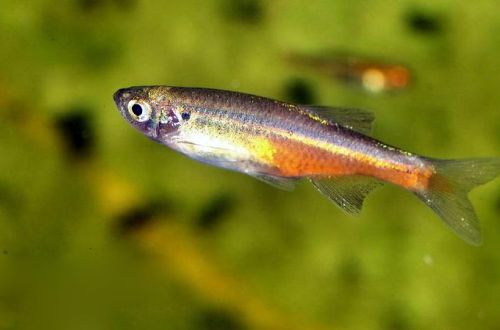
Danio Dracula
Danio Dracula, scientific name Danionella dracula, belongs to the Cyprinidae family. Why did such a small and harmless-looking fish get such a formidable name? It’s all about the morphology of the jaw in males. The upper and lower jaws have tooth-like processes. Among the lower rows of “teeth” there is a pair of elongated fangs protruding beyond the mouth, though only by 0.3 mm and it is unlikely that they can be seen with the naked eye. This unique structure of the jaw with two fangs inspired biologists to name it in honor of Count Dracula from the novel by Bram Stoker.
It is worth noting that these “teeth” are characteristic exclusively of male individuals and are not characteristic of other cyprinids.

Contents
Habitat
It comes from Southeast Asia from the territory of northern Myanmar (Burma). Presumably endemic to a limited region in the Mohnyin River basin, a right tributary of the Chindwin River. There is no exact information about the natural habitat, but by analogy with other species that inhabit this area, Danio Dracula is found in small streams and slow-flowing rivers flowing under the canopy of the rainforest.
Brief information:
- The volume of the aquarium – from 40 liters.
- Temperature – 20-26°C
- Value pH — 6.5–7.5
- Water hardness – 2–5 dGH
- Substrate type – any dark
- Lighting – subdued
- Brackish water – no
- Water movement – little or no
- The size of the fish is about 1 cm.
- Feeding – any food of suitable size
- Temperament – peaceful
- Content in a group of 10 individuals
Description
Adult individuals reach a length of about 1 cm. The body is translucent through which the ridge and internal organs are visible. During the spawning period, large eggs in the abdominal cavity are clearly visible in females.
Food
Despite their miniature size, picking up food is easy enough, as long as it is the right size. Fish accept most popular products: dry flakes, granules, freeze-dried, live, frozen daphnia, brine shrimp.
Maintenance and care, arrangement of the aquarium
The optimal size of the aquarium starts from 40 liters. The design uses a large number of aquatic plants, including floating ones, which should cover about half of the water surface. The soil is any soft with a few snags and large stones. The lighting is subdued.
Danio Dracula does not respond well to the movement of water. A strong current can simply carry these small fish. If the number of inhabitants of the aquarium is not large, for example, about a dozen, then it will be quite enough to install a simple airlift filter with filter material in the form of a sponge. It performs soft filtration and additionally saturates the water with oxygen, which is important in the presence of dense thickets of plants. At night, when the light is turned off, photosynthesis stops and the plants begin to absorb the previously produced oxygen, which without being able to lead to suffocation in fish. The airlift filter reduces the risk of such a situation.
Maintenance comes down to a few standard procedures: weekly replacement of part of the water with fresh water, removal of organic waste (excrement, food residues), preventive maintenance of equipment, control and maintenance of stable pH and dGH values.
Behavior and Compatibility
Peaceful calm fish. They prefer to be in a flock of 200 or more individuals. Given such a tiny size, it is advisable to keep in a species aquarium, or purchase other similar small fish.
Breeding / breeding
At the time of writing, there were no successful experiments in breeding Danio Dracula in an artificial environment.
Fish diseases
In a balanced aquarium ecosystem with species-specific conditions, diseases rarely occur. Often, diseases are caused by environmental degradation, contact with sick fish, and injuries. If this could not be avoided and the fish shows clear signs of illness, then medical treatment will be required. Read more about symptoms and treatments in the Aquarium Fish Diseases section.





